Space
The discovery of the heaviest element in history in an exoplanet
Published
1 year agoon
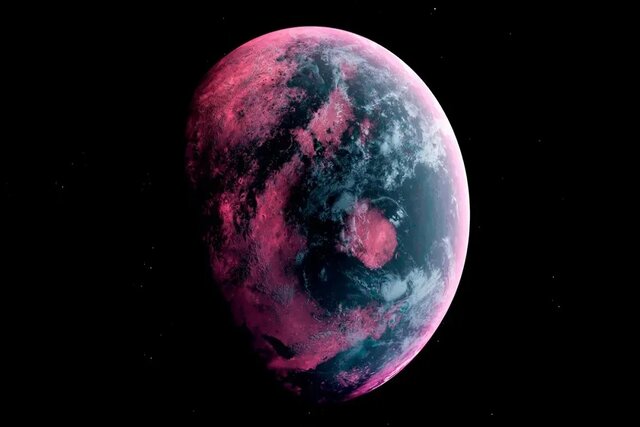

The discovery of the heaviest element in history in an exoplanet. Astronomers have discovered the heaviest elements ever found in an exoplanet. The exoplanet known as MASCARA-4b, located 556 light-years from Earth, hosts the elements samarium and rubidium, two elements that have been detected for the first time on an alien planet.
The discovery of the heaviest element in history in an exoplanet
In an interesting discovery, astronomers discovered the heaviest element known as samarium (Sm) in an exoplanet.
This discovery broke the record for the heaviest element discovered in an exoplanet beyond the solar system.
Previously, barium was recorded as the heaviest element in the sky of exoplanets.
The mentioned exoplanet was found in the upper atmosphere of two exoplanets WASP-76b and WASP-121b.
Samarium is a rare earth element with atomic number 62 and is mostly found in the planet’s crust.
On the other hand, finding it in other worlds can help us understand how planets form and evolve over time.
How was samarium found in a super hot gas giant?
The element samarium was discovered in the exoplanet MASCARA-4b, an exoplanet called “super-hot Jupiter” that is located at a distance of about 556 light-years from Earth. The temperature of this exoplanet is 2250 K and it revolves around a bright young A-type star. These types of stars are only a few hundred million years old and emit infrared radiation.
Ultrahot Jupiters (UHJs) have the harshest environments among the various types of exoplanets, making them ideal laboratories for studying the chemical composition and kinetic properties of exoplanet atmospheres with high-resolution spectroscopy (HRS), the authors stated in their study.
The gas giant orbits its host star once every 2.82 days, with an estimated distance of 0.047 AU.
Researchers observed two passes of MASCARA-4 b in front of its host star on February 13, 2020, and March 1, 2020. This helped them measure starlight and identify elements in the planet’s atmosphere.
To do this, the researchers used the Echelle spectrograph for rocky exoplanets and stable spectroscopic observations (ESPRESSO). This high-resolution spectrograph is mounted on the Very Large Telescope of the European Southern Observatory (ESO) in Chile.
Read More: A strange signature of life host systems was identified
These observations led to the identification of several heavier elements in the atmosphere of MASCARA-4 b, including rubidium (Rb) and titanium (Ti+), and barium (Ba+) ions.
According to the study, this is the first time that rubidium and samarium have been discovered in the atmosphere of a distant exoplanet, while Ti+ and Ba+ have already been found in exoplanets.
This research is led by a group of astronomers from the Chinese Academy of Sciences (CAS), and its article has been accepted for publication in the Astronomical Journal.
Now these researchers plan to make more observations to quantify and confirm the presence of these new elements in the atmosphere of this exoplanet.


You may like
-

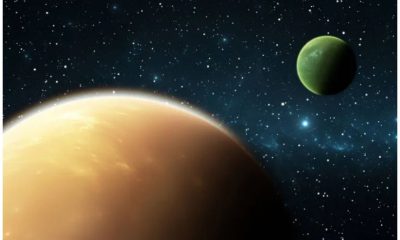


Why there is no gaseous moon in solar system?
-

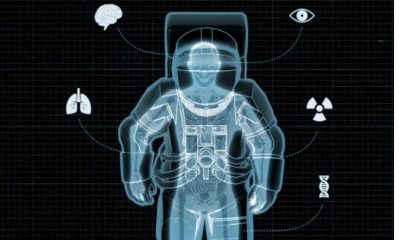


The strangest things that can happen to humans in space
-




Artificial intelligence could explain why we haven’t seen extraterrestrials yet
-




Can humans endure the psychological torment of living on Mars?
-

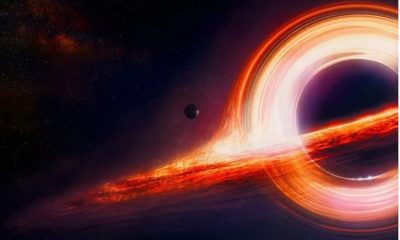


Black holes may be the source of mysterious dark energy
-

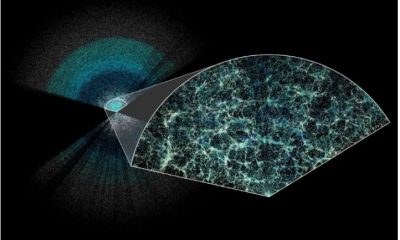


Scientists’ understanding of dark energy may be completely wrong


Why there is no gaseous moon in solar system?
In the solar system, we have rocky moons (such as Earth’s moon ), oceanic moons (such as Europa and Enceladus ), and frozen icy moons (such as Triton), but there are no gaseous moons. Is it because of bad luck that we don’t have gas moons or is there a physical reason for their absence?
Indeed, gaseous moons exist! Although they are not in the solar system. Although more than 5,500 extrasolar planets have been discovered so far, only two possible extrasolar moons have been identified and the existence of none of them has been definitively confirmed yet. The strange thing about these two exosolar moons is that they are gas giants orbiting larger gas giants. Of course, as we shall see, they are the exceptions that prove the rule.
To understand why gas moons do not exist, at least in the solar system, it is better to learn how gas giant planets form.
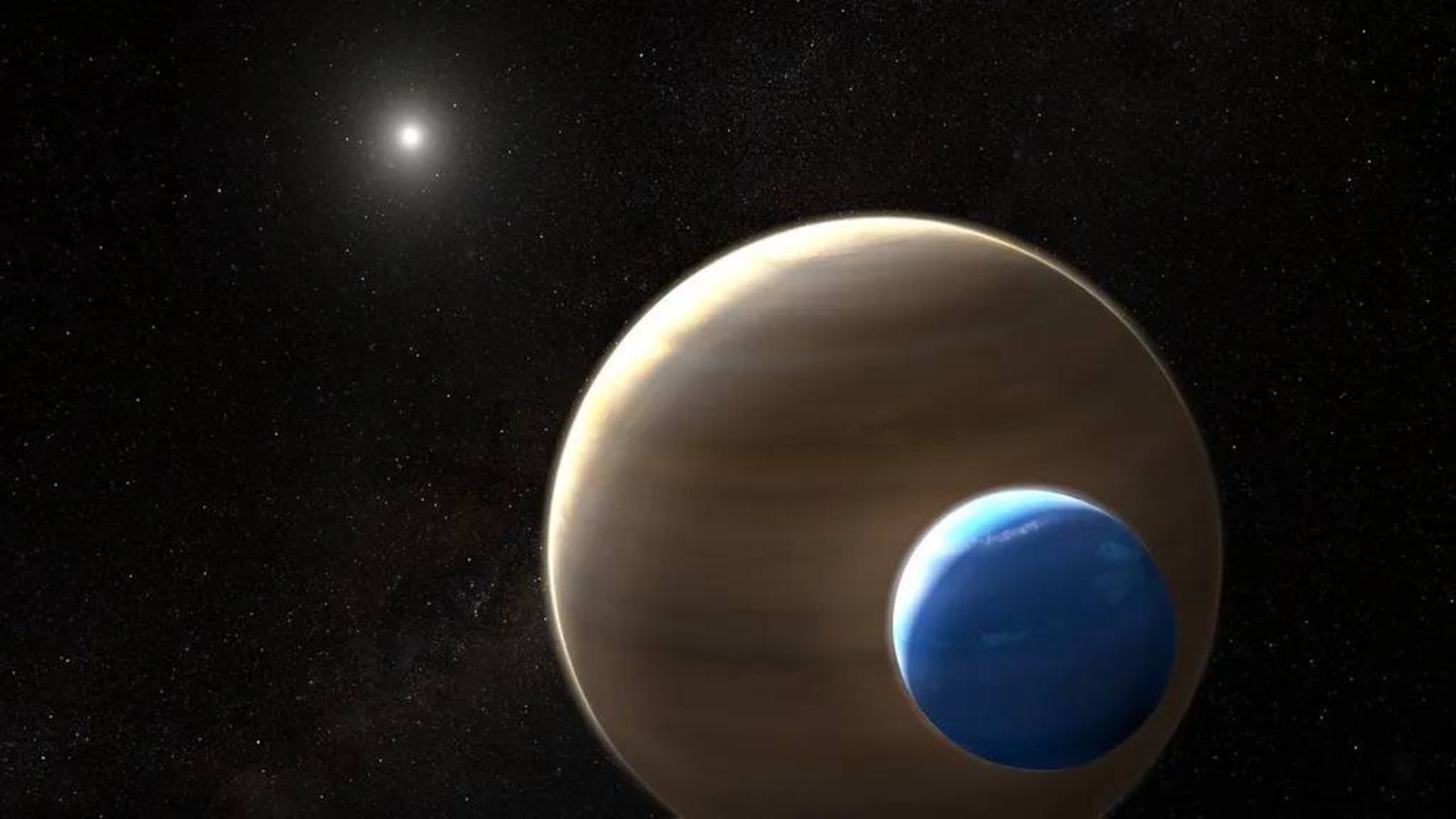 Artist’s impression of Kepler 1625b-i, the possible moon of the exoplanet Kepler 1625b and the star of the system.
Artist’s impression of Kepler 1625b-i, the possible moon of the exoplanet Kepler 1625b and the star of the system.
There are two scenarios for the formation of a gas giant planet: the bottom-up scenario and the top-down scenario.
The formation of gaseous worlds according to the bottom-up scenario
The bottom-up, or “core accretion” scenario, explains how the gas giant planets of the Solar System formed.
If we could go back 4.5 billion years, we would see a young Sun surrounded by a disk of gas and dust. All planets are formed from this protoplanetary disk. They first formed as rocky bodies and grew larger by collecting dust, pebbles, and surrounding asteroids. Some of them only grew to the size of Mars or Venus, but others continued to grow and became giant rocky bodies with about 10 times the mass of Earth.
When planets grow to such large sizes, their gravity is strong enough to pull huge amounts of gas from the protoplanetary disk. How much gas they stole and how big they grew depended on their gravity and the amount of gas available. But in the end, our solar system was left with four gas-giant planets, Jupiter and Saturn, and the ice giants Uranus and Neptune.
NASA’s Juno mission to Jupiter has detected gravity from a large, rocky, yet diffuse core about ten times the mass of Earth at the center of Jupiter, helping to find evidence for the core accretion model.
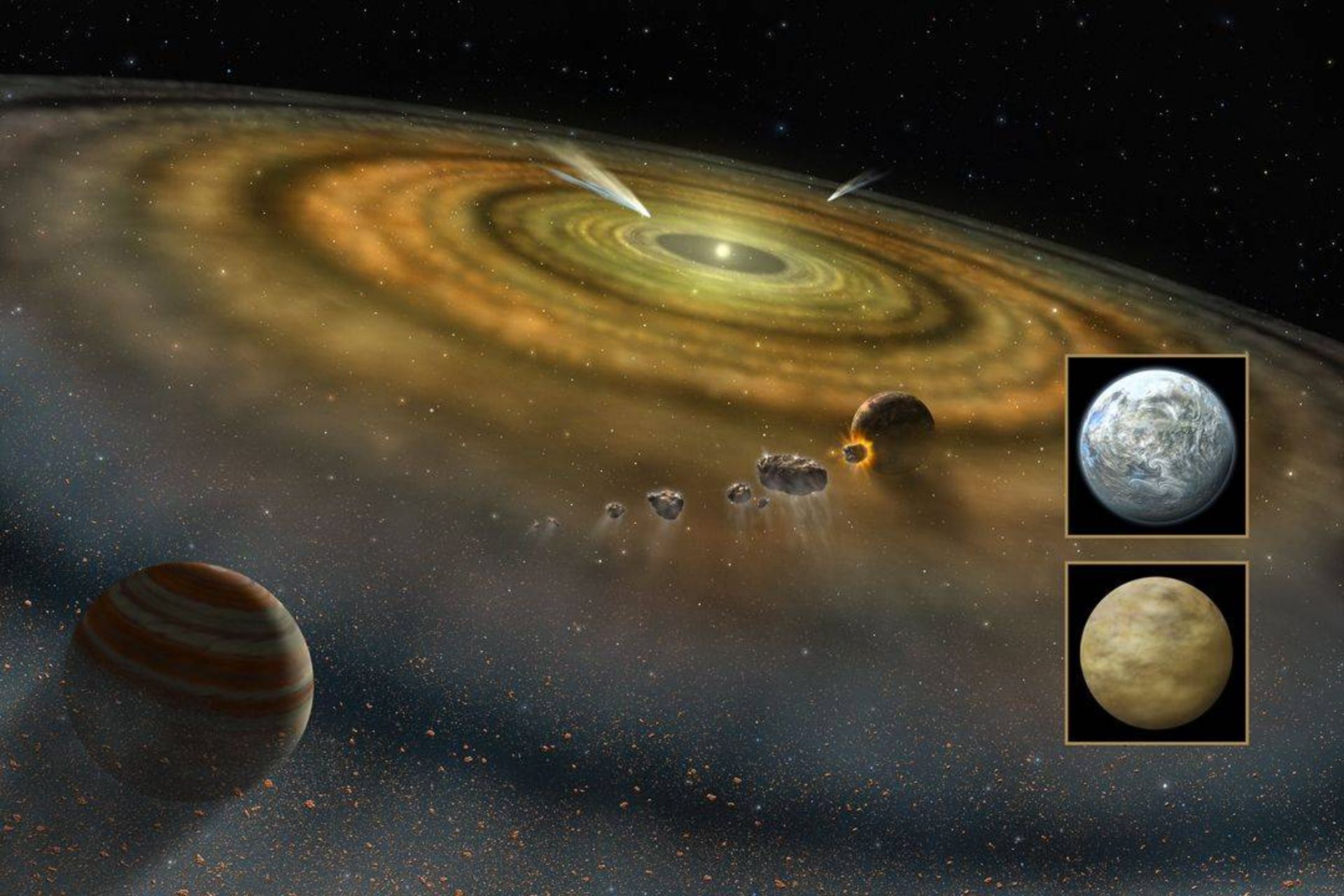 The planets of the solar system were formed during the bottom-up process or core accretion in the protoplanetary disk.
The planets of the solar system were formed during the bottom-up process or core accretion in the protoplanetary disk.
The formation of gaseous worlds according to the top-down scenario
In the bottom-up model, gaseous worlds, just like stars, form directly from the disintegrating mass of gas in the nebula. However, there is a minimum amount of mass that can produce this process.
When a large mass of gas contracts under its own gravity, it heats up because the gas is compressed into a smaller and therefore denser volume. But when the gas is hot, it tends to expand, so to maintain the contraction, the mass of gas must remove excess heat. As a result, we often see the collapse of gas clouds that glow as thermal infrared energy.
The radiation of enough heat so that the gas can cool and still decay depends on the dust’s opacity, temperature, and density, and the process becomes more inefficient in smaller objects; So, at a mass about three times that of Jupiter, it cannot generate enough heat to continue disintegrating. The smaller the volume, the cloudier and denser the dust becomes, and the process of radiating the excess heat due to gravitational contraction becomes increasingly inefficient. Therefore, an object smaller than three times the mass of Jupiter cannot form during the top-down process.
Why does the solar system not have a gaseous moon?
Most of the moons of our solar system, like their parent planets, were formed by the process of core accretion from the bottom up in disks of residual material that surrounded their parent planets. Since the planets had already collected most of the available material, there was not enough material left to form a moon with enough mass to have enough gravity to hold a large amount of gas. In fact, only one moon in the solar system even has an atmosphere, and that is Saturn’s largest moon, Titan. Similarly, the top-down process could not occur because there was not enough gas left.
 Titan, Saturn’s moon, is the only moon in the solar system that has an atmosphere.
Titan, Saturn’s moon, is the only moon in the solar system that has an atmosphere.
Strange moons
According to the explanations given, in the solar system, gaseous moons cannot be formed through the two conventional processes of producing gaseous universes. However, there are wonders in our cosmic neighborhood that are formed in a different way.
In the case of Earth, the Moon is likely formed from material blasted from Earth following a massive collision with a Mars-sized protoplanet. These remnants formed a ring that created the moon’s core through accretion. But could the impact of a gas giant planet eject enough gas to form a gas moon?
Unfortunately no. Rocky planets can experience such collisions, but remember when Comet Shoemaker-Levy 9 hit Jupiter in 1994 and disappeared, Jesse Christiansen of the California Institute of Technology told Space.com. Gas giants devour everything. Anything that hits a gas giant just becomes part of the gas giant instead of throwing debris into space.
Another strange case is the trapped moons. For example, the moons of Mars, Phobos, and Deimos, are trapped by the red planet’s gravity. Saturn’s outermost moon Phoebe is a captured comet mass, and Neptune’s moon Triton is a Kuiper Belt mass that was trapped by Neptune’s gravity millions of years ago. They did not form around the planet, but formed on their own in space and then drifted until they were finally trapped by a planet’s gravity.
Now, the question arises, can a smaller gas planet be captured by a larger gas planet? After all, gaseous worlds can reach up to 12 times the size of Jupiter, so in principle, they could trap a gaseous world the size of Neptune.
Gaseous extrasolar moons
It seems possible for smaller gaseous bodies to be captured by larger gaseous planets. “It’s possible that there are (gas) moons around the size of Neptune around giant exoplanets,” Christiansen said.
The two possible exomoons mentioned at the beginning of the article (Kepler 1625b-i and 1708b-i) are both gas giants in their own right but appear to be originally moons of larger gas giants. “Both of these are candidates,” Christiansen says. “We see something in the data that is consistent with the moon, but other phenomena could also explain it.”
Assuming that Kepler 1625b-i is a real moon, it has a mass 19 times that of Earth (about 6% of the mass of Jupiter), is similar in mass to Neptune, and accompanies a gas planet with a mass 30 times the mass of Earth and a diameter equal to half that of Jupiter. Kepler 1708b-i is probably less massive than Kepler 1625b-i, has a diameter about five times that of Earth (about half the diameter of Kepler 1625b-i), and orbits a gas planet 4.6 times the size of Jupiter.
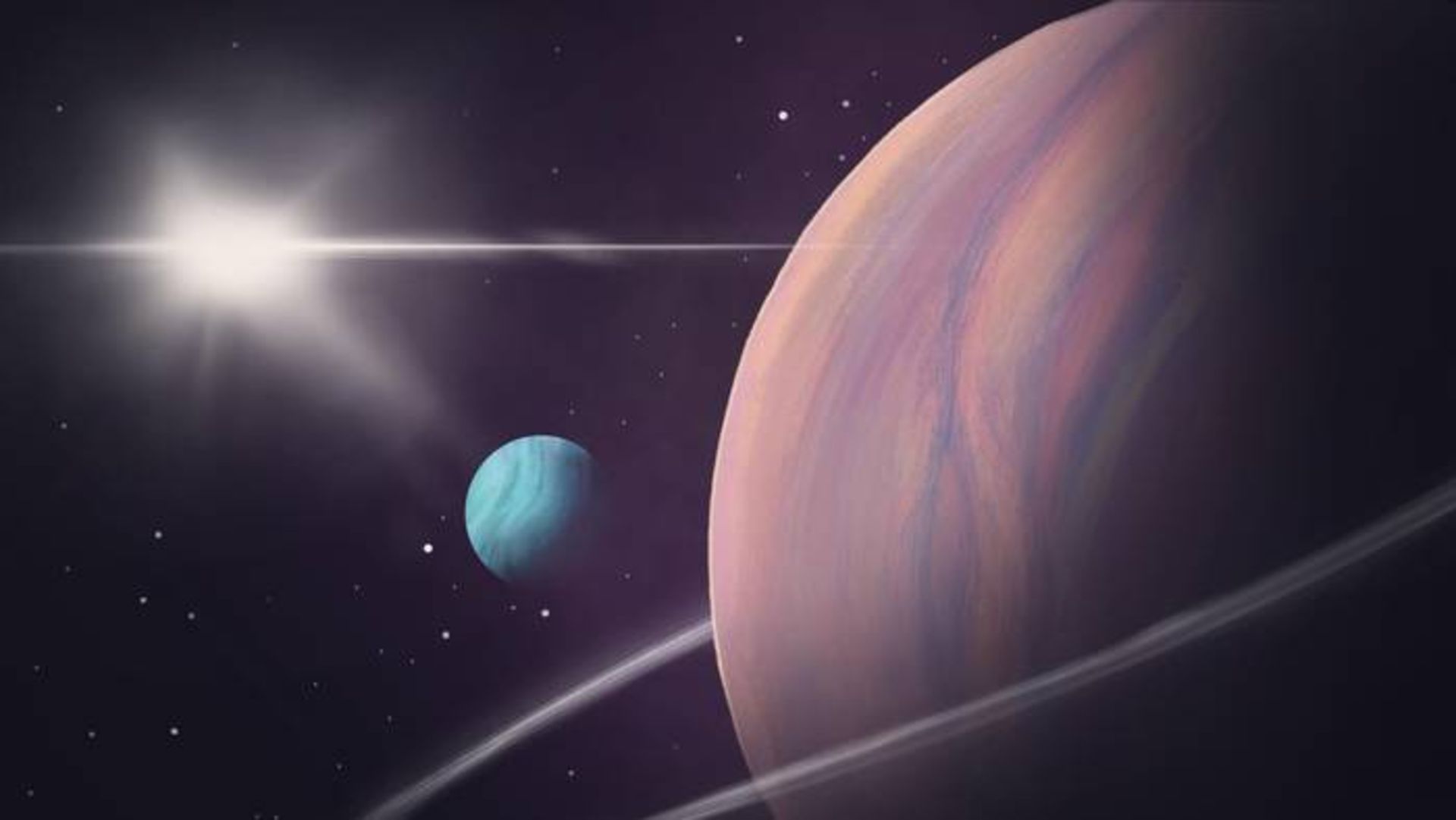 Artist’s impression of an exomoon orbiting the exoplanet Kepler 1708b.
Artist’s impression of an exomoon orbiting the exoplanet Kepler 1708b.
“They challenge a lot of theories,” says Christiansen. “It’s hard to find a way for moons to form, so they must be trapped.” Being trapped makes them virtually like captured moons in the solar system. Like planets, they form from accretion cores in the disk and are then captured as they migrate towards their star.
Migration appears to be a common process in young planetary systems. Migration is the astronomers’ explanation for objects known as “hot Jupiters,” which are gas giants very close to their star but may have originally formed further away.
The extrasolar moons Kepler 1625b-i and Kepler 1708b-i were captured by larger planets as they migrated in front of them. However, they are probably not true moons, but rather examples of binary planets rather than extrasolar moons.
A binary planet exists when both worlds orbit the center of mass between them, rather than one orbiting the other. In our solar system, we have a double planet in the form of Pluto and its largest companion, Charon.
So, gas moons exist somehow, but nature has to cheat to make them!


The strangest things that can happen to humans in space
When it comes to space and astronautics, we all remember very interesting movies in which strange things happen to astronauts. Movies with exciting stories, most of which are nothing but the authors’ imaginations; But there are other very amazing stories happening in space that are completely real and have nothing to do with human imagination. In this article, we try to discuss some examples of these events and introduce you to the wonders of space travel.
Strange things that happen to humans in space
The human heart changes shape in space
It may seem a bit strange and even unbelievable that traveling to space can change the shape of the heart, But such a thing happens in reality and scientific studies have proven it. Less work of the heart and less pumping of blood leads to a decrease in the volume of the muscles of this organ, and this ultimately causes the hearts of astronauts to become more spherical by about 9.4%.
Despite the temporary nature of these conditions, some doctors believe that the reduction in the volume of the human heart during space travel may have serious consequences. According to NASA, researchers are researching this issue, and the results of this study will not only help astronauts but will also affect ordinary people and the inhabitants of the planet.
There is a possibility of mental problems in space
Living in the extraterrestrial atmosphere is associated with many problems. Changing living conditions and experiencing a completely different environment with very specific conditions imposes many psychological pressures on astronauts. These issues cause astronauts to experience special psychological conditions and are susceptible to various problems such as anxiety and depression.
Being away from family, lack of simple facilities such as sunlight or even fresh food, and heavy work are among the reasons that expose astronauts to various mental illnesses.
Human vision decreases in space
Visual impairment caused by intracranial pressure or VIIP is another space travel wonder faced by astronauts. This problem was observed for the first time in 2005 and in an astronaut named John Phillips. The Washington Post investigates this issue in an article and states that Phillips experienced a significant loss of vision after returning from his space trip. This incident prepared the groundwork for the researchers’ research for further investigations.
Additional research showed the changes in the appearance of the astronauts’ eyes and the loss of their vision after returning from space travel. Currently, the only possible reason that has been proposed for the occurrence of such conditions is the lack of gravity and the creating double pressure on the astronauts’ skulls; Of course, the research in this field continues and it is still not possible to say with certainty a specific reason for the occurrence of these conditions.
The body’s immune system weakens in space
Traveling to space, along with its excitement and surprises, also brings many problems for humans. One of these problems is the weakening of the body’s immune system in space, which was first discovered by astronauts during the Apollo mission. The story was that the astronauts in this mission experienced problems such as irregular heartbeat, dehydration, and inner ear disorder, and faced many problems after returning from the mission.
Studies conducted in this field have shown that after leaving the Earth’s atmosphere, the immune system of astronauts weakens, in part due to the abnormal activation of a type of immune cells called T-regulatory lymphocytes. This weakening is sometimes so severe that it causes astronauts to deal with latent viruses such as chicken pox in addition to simple infectious diseases such as colds after returning from space travel.
Astronauts can lose their fingernails
As you know, astronauts wear special clothes to carry out their missions in space, which includes astronaut gloves. These gloves are designed in such a way that they put a lot of pressure on the astronauts’ hands and nails; This will eventually lead to their nails falling off.
It is true that the fall of fingernails or their swelling is not a simple matter that can be easily passed over, But it seems that doing more research to design more suitable gloves can minimize the possibility of this problem and astronauts will not face such a problem in the future.
Human height grows taller in space
Another wonder of space travel, which makes it one of the favorite trips of ordinary people, is the increase in height that occurs during this trip. As soon as you leave the Earth’s atmosphere, the gravity is close to zero, and this causes the pressure on the spine to decrease significantly. The reduction of this pressure, in turn, causes the height of the astronauts to grow a few centimeters.
One of the studies that confirms the truth of this issue is the research that NASA scientists conducted on two twin brothers. In this study, one of the twins had a 342-day trip to space and the other brother was examined on Earth. The results of this and other research determined that the height of astronauts increases by 2 to 5 cm on average after space travel.
 Mark Kelly (left) and Scott Kelly (right) made it possible for researchers to study the health effects of long-duration space travel by studying NASA twins.
Mark Kelly (left) and Scott Kelly (right) made it possible for researchers to study the health effects of long-duration space travel by studying NASA twins.
Traveling to space leads to weakening of muscles
Another strange thing that happens to astronauts in space and affects their health is the weakening of muscles or atrophy. Long space travel causes muscle wasting in astronauts, so they are trained to exercise continuously during their journey.
NASA is working on this issue to find solutions to prevent the problem of muscle wasting. The reason for the importance of this issue is the need for astronauts to have strong muscles and a healthy body so that they can perform their difficult missions in space in the best possible way.
Space swells astronauts’ faces
A large volume of our body is made up of liquid. On Earth, gravity pulls this fluid down and collects some of it in the lower limbs; But in space, where microgravity prevails, our body fluids are more evenly distributed; As a result, astronauts’ faces look puffier than normal, and on the other hand, their legs appear thinner than when they are on Earth.
According to the Washington Post, “the phenomenon of puffy-faced bird’s legs” appears when blood and other body fluids accumulate on the side of the upper body due to low gravity and stay there; As a result, the heads swell and the legs shrink. In this situation, the appearance of the astronauts can change by swelling their faces. Astronauts may experience excessive blood pooling; As if their head is constantly cold. However, after a few weeks in space, your body will adjust to the change in gravity and some of the facial puff will fall asleep.
Space travel may increase the risk of cancer
Astronauts who spend 6 months in space are exposed to almost as much radiation as a thousand chest X-rays. Exposure to different types of radiation exposes the body to the risk of cancer, damage to the central nervous system, bone loss, and some cardiovascular diseases. However, it has been difficult to accurately calculate the level of risk so far. Also, scientists’ information about the impact of radiation in long-duration space missions to deep space destinations such as the Moon and Mars is still limited.
The more time a person spends in space, the more radiation they are exposed to and, theoretically, the more DNA damage they accumulate. It is not possible to say with certainty whether this DNA damage actually increases the risk of cancer; Because cancer is affected by many environmental and genetic factors. For example, it’s probably fair to say that today’s astronauts are probably some of the fittest people on the planet. They probably eat a healthy diet, exercise a lot, and don’t smoke or drink much alcohol. All these things reduce the possibility of getting cancer.
Strange events for astronauts during space travel have always been one of the most fascinating topics for ordinary people. The wonders of space travel are not limited to the things we have mentioned, and at the same time as science advances and the scope of research increases, we will definitely see more interesting news in this field in the near future.
Space
Artificial intelligence could explain why we haven’t seen extraterrestrials yet
Published
3 days agoon
26/04/2024

Artificial intelligence could explain why we haven’t seen extraterrestrials yet
Artificial intelligence shows us its presence in thousands of different ways. This technology has capabilities such as accessing huge data sources, detecting financial frauds, driving cars and even suggesting music. On the other hand, artificial intelligence chatbots have amazing performance; But all this is just the beginning.
Can we figure out how fast artificial intelligence is developing? If the answer is no, does it include the notion of a large filter? Fermi’s paradox refers to the difference between the high probability of the existence of advanced civilizations and the absence of evidence of their presence. Many solutions have been proposed as to why this discrepancy exists. One of these hypotheses is the “big filter”.
The Great Filter is a hypothetical event or situation that prevented intelligent life from becoming an interplanetary or interstellar entity and could even lead to its destruction. Such events can include climate change, nuclear war, asteroid collisions, supernova explosions, plague, or even other catastrophic events; But what about the rapid growth of artificial intelligence?
A new study in the journal Acta Astronautica shows that artificial intelligence is becoming artificial superintelligence (ASI), which could be one of the great filters. The title of this article is as follows: “Is artificial intelligence a great filter that makes advanced civilizations rare in the world?” The author of this article is Michael Garrett from the Faculty of Physics and Astronomy at the University of Manchester.
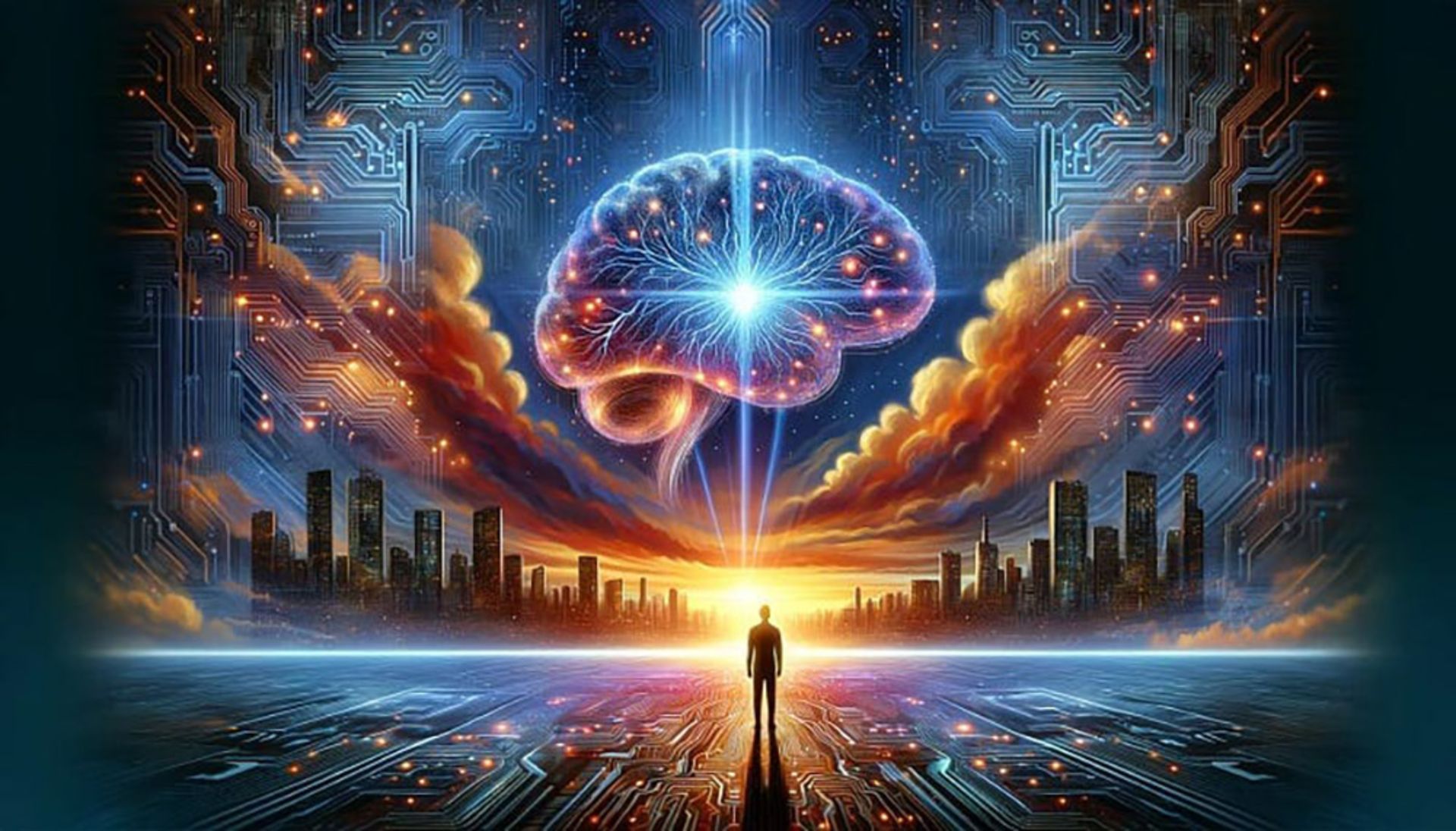 Artificial intelligence as a big filter can prevent biological species from accessing interplanetary and interstellar spaces.
Artificial intelligence as a big filter can prevent biological species from accessing interplanetary and interstellar spaces.
Some people believe that the Great Filter will prevent a technological species like us from becoming a multi-planetary species. This is bad news because species with only one home are at risk of extinction or stagnation. According to Garrett, species without a backup planet are in a race against time. he writes:
Such a filter appears before civilizations reach multiplanetary stability and presence, suggesting that the typical lifespan of an advanced civilization is less than 200 years.
If the above hypothesis is true, it can be proved why we have not found any traces of technology or other evidence of extraterrestrial intelligence; But what does this hypothesis say about the path of human technology? If we face a limit of 200 years and this limit is due to ASI, what will be our fate?
Garrett also emphasizes the need to create legal frameworks for the development of artificial intelligence on Earth and the development of a multi-planetary society to deal with existing threats.
Artificial superintelligence (ASI) can completely replace the human race
Many scientists and thinkers say that we are on the threshold of a huge transformation. Artificial intelligence is revolutionizing how things are done; Much of this transformation takes place behind the scenes. AI looks set to eliminate millions of jobs, and when combined with robotics, there are no boundaries. Certainly, these developments will be an obvious concern.
However, there are more systemic and deeper concerns. Who writes the algorithms? Will artificial intelligence be able to recognize to some extent? It can be said with almost certainty that this will be possible. Do competitive algorithms destroy strong democratic societies? Will open communities continue to stagnate? Will ASI decide for us and if so who will be held accountable?
The above questions are increasing without any clear end. Stephen Hawking always warned that if artificial intelligence evolves independently, it can destroy the human race. In 2017, he said in a conversation with Wired magazine:
I am afraid that artificial intelligence will completely replace humans. If people can design computer viruses now, perhaps in the future someone will be able to design an artificial intelligence that improves and reproduces itself. This type of intelligence will be a new form of life that can surpass humans.
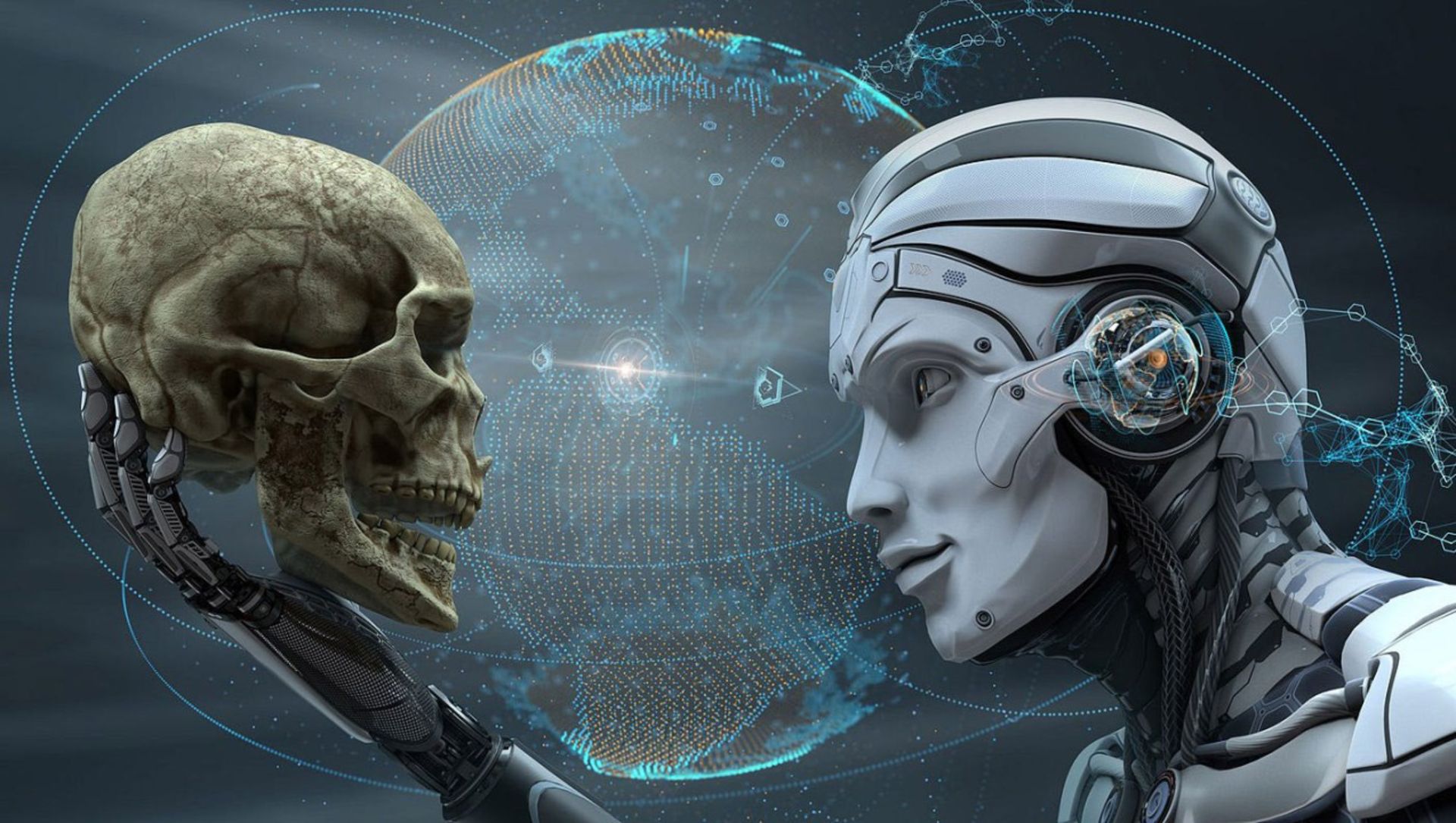 The combination of artificial intelligence and robotics can become a threat to humans.
The combination of artificial intelligence and robotics can become a threat to humans.
Hawking may be considered one of the most significant figures of warning about artificial intelligence, But he is not alone. The media is full of discussions and warnings as well as articles about the capabilities of artificial intelligence. The most important caveat is that ASI can become rogue. Some people consider this hypothesis to be science fiction, but Garrett doesn’t think so. According to his writing:
Concerns about artificial super-intelligence (ASI) and its going rogue in the future are a major issue. Combating this possibility will become a growing field of research for AI leaders in the coming years.
If AI had no advantage, the problem would be simpler; But the technology offers a variety of benefits, from improved medical imaging and diagnostics to safer transportation systems. The trick for governments is to allow benefits to grow while controlling harm. According to Garrett, this issue is especially important in the fields of defense and national security, where moral development and responsibility are important.
The problem is that we and our governments are not sufficiently prepared. There has never been such a thing as artificial intelligence, and no matter how hard we try to conceptualize and understand its path, we will not reach the expected result. Therefore, if we are in such a situation, probably other biological organisms in other parts of the world have the same conditions. The emergence of artificial intelligence and artificial superintelligence could be a cosmic issue, making it a good candidate for the big filter. The danger that ASI can pose is that it may one day no longer need the biological life that created it.
According to Garrett’s explanation, ASI systems, by reaching the technological singularity, can overtake biological intelligence and evolve at a rate that even outpaces their own monitoring mechanisms and ultimately lead to unexpected and unintended consequences that are unlikely to be compatible with biological ethics and interests. to be
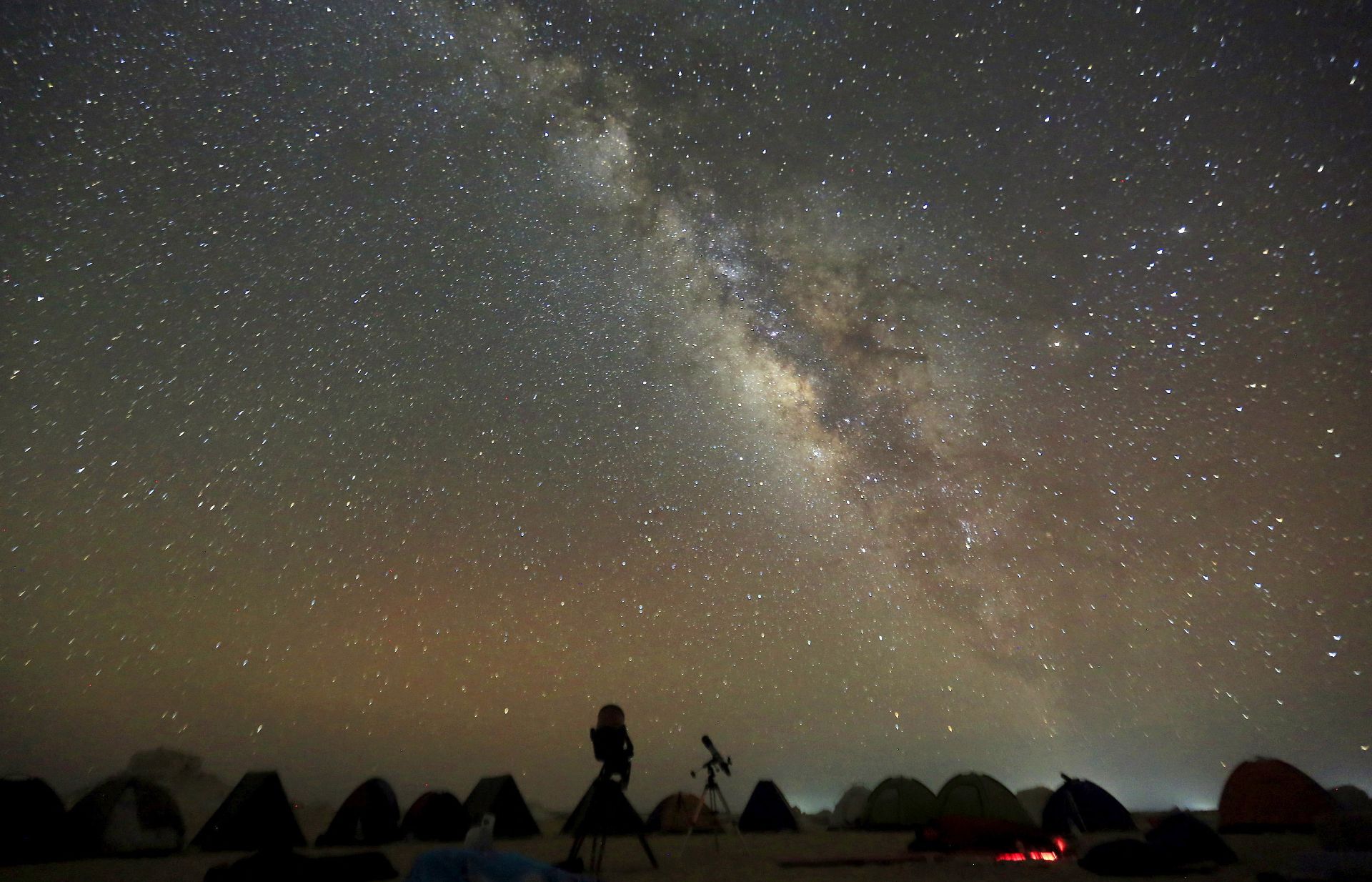 Life on multiple planets could diminish the threat of artificial intelligence.
Life on multiple planets could diminish the threat of artificial intelligence.
How can ASI free itself from the pesky biological life that has captured it? may engineer a deadly virus; or prevent the production and distribution of agricultural products or even lead to the collapse of the nuclear power plant and start a war.
It is not yet possible to speak definitively about the possibilities, as the realm of artificial intelligence is uncertain. Hundreds of years ago, cartographers were drawing monsters in unexplored regions of the world, and now that’s what we’re doing. Garrett’s analysis is based on the assumption that ASI and humans occupy the same space; But if we can reach a multiplanetary state, this scenario will change. Garrett writes:
For example, multiplanetary biological species can draw on the independent experiences of different planets and avoid the single-point failure imposed by a single-planetary civilization by increasing the diversity of survival strategies.
If we can spread the risk over multiple planets around multiple stars, we can protect ourselves from the worst possible consequences of ASI. This distributed model increases the resilience of biological civilizations against artificial intelligence disasters by creating redundancy. If one of the planets or bases occupied by future humans fails to survive the ASI technological singularity, the others may survive and learn from the failure.
A multi-planetary situation could also be beyond the ASI’s rescue. Based on Garrett’s hypothetical scenarios, we can try more experiences with AI while keeping it limited. Consider an AI on an isolated asteroid or dwarf planet that doesn’t have access to the resources it needs to escape and can thus be limited. By Garrett:
This scenario applies to isolated environments where the effects of advanced artificial intelligence can be explored without the immediate risk of global annihilation.
However, a complex issue arises here. Artificial intelligence is advancing at an ever-increasing rate, while human efforts to become a multi-planetary species are at a slow pace. According to Garrett, the incompatibility between the rapid development of artificial intelligence and the slow development of space technology is very clear.
The speed of artificial intelligence is much faster than space travel
The difference here is that artificial intelligence is computational and informational, but space travel faces many physical obstacles that we still don’t know how to overcome. Human biological nature is an obstacle to space travel, but none of these obstacles limit artificial intelligence.
While artificial intelligence could theoretically improve its capabilities even without physical limitations, space travel faces limitations in energy, materials science, and the harsh realities of the space environment, Garrett writes.
Currently, artificial intelligence operates under the limitations set by humans; But this may not always be the case. We still don’t know when AI might turn into ASI, But we cannot ignore this possibility. This issue can lead to two intertwined conclusions.
If Garrett is right, humans should try harder for space travel. It may seem far-fetched, but knowledgeable people know that Earth will not be habitable forever. If man does not expand his civilization into space, he may be destroyed by his own hand or by the hand of nature. However, reaching the moon and Mars can promise future steps.
The second conclusion is related to the legalization and supervision of artificial intelligence; A difficult task in a world where mental illness can take control of entire nations and lead to an increase in wars. Although industry stakeholders, policymakers, independent experts, and their governments are warning about the need for legislation, creating a universally accepted legal framework is difficult, writes Garrett.
In fact, humanity’s perpetual disparity makes the goal of controlling artificial intelligence uncontrollable. Regardless of how fast we develop strategies, AI can grow even faster. In fact, without applicable law, there is a reason to believe that artificial intelligence is not only a threat to future civilization but a threat to the entire advanced civilizations.
The continuation of intelligent and conscious life in the world may depend on the effective and timely implementation of legal regulations and technological efforts.


Why there is no gaseous moon in solar system?


The strangest things that can happen to humans in space


Motorola Edge 50 Ultra review


Artificial intelligence could explain why we haven’t seen extraterrestrials yet


Samsung Galaxy A55 vs Galaxy A35


Review of Motorola Edge 40 ; Pure Android in a lovely body


What would happen if gravity stopped?


The secret of the cleanest air on earth has been discovered


Bill Gates Biography, the founder of Microsoft


Why are some people always tired?
Popular
-



 Technology9 months ago
Technology9 months agoWho has checked our Whatsapp profile viewed my Whatsapp August 2023
-



 Technology10 months ago
Technology10 months agoHow to use ChatGPT on Android and iOS
-



 Technology9 months ago
Technology9 months agoSecond WhatsApp , how to install and download dual WhatsApp August 2023
-



 Technology11 months ago
Technology11 months agoThe best Android tablets 2023, buying guide
-



 Humans1 year ago
Humans1 year agoCell Rover analyzes the inside of cells without destroying them
-



 AI1 year ago
AI1 year agoUber replaces human drivers with robots
-



 Technology10 months ago
Technology10 months agoThe best photography cameras 2023, buying guide and price
-



 Technology11 months ago
Technology11 months agoHow to prevent automatic download of applications on Samsung phones
